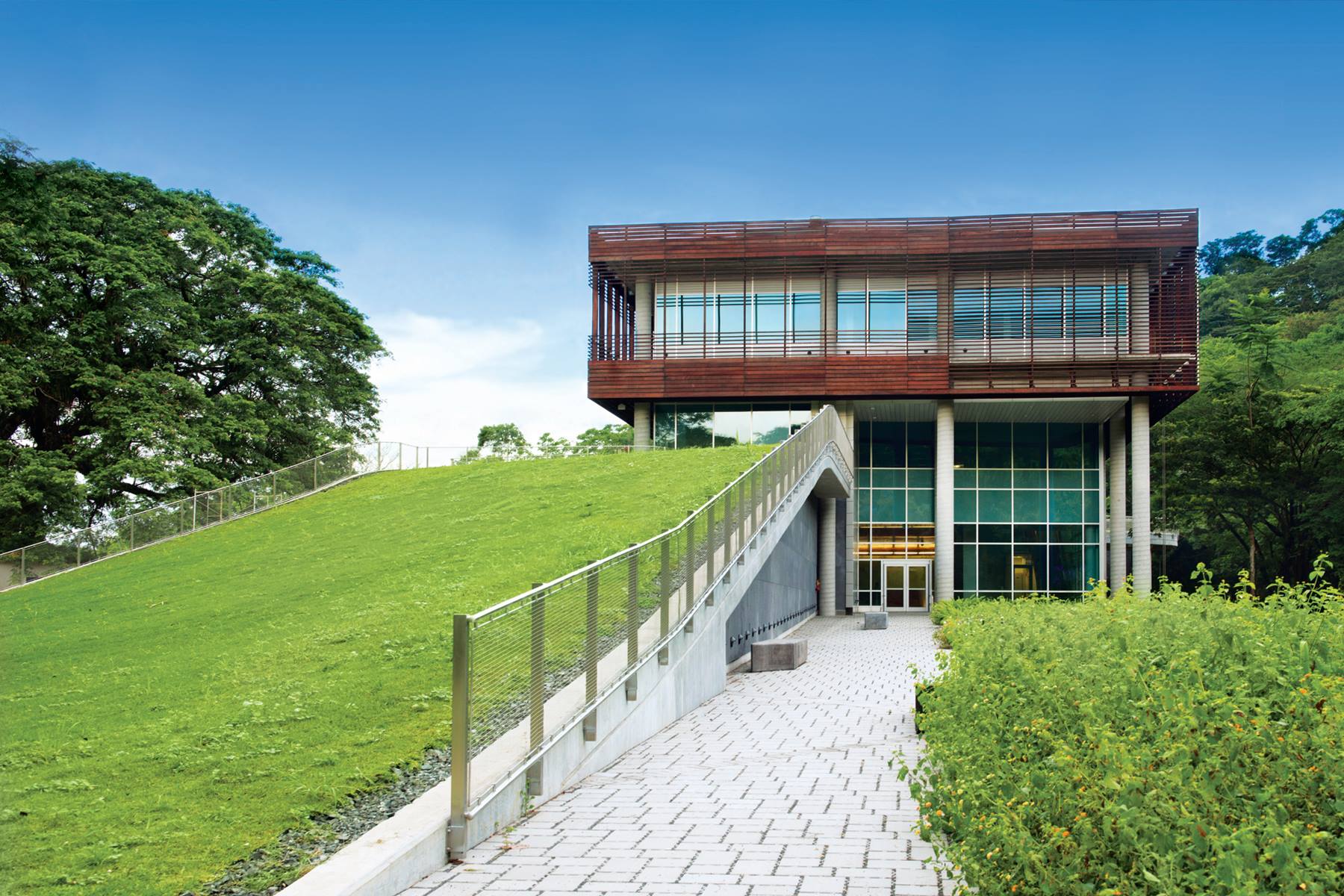
STRI’s new rainforest digs and a bit of context
photos and story by Eric Jackson
“Where do you find the laboratory?” The Smithsonian Tropical Research Institute (STRI) gave a numerical answer to its rhetorical question in the handout to reporters who were already there: “9.11°, -79.70°” Those are coordinates of latitude and longitude — not rocket science, but an opening reminder that to cover this internationally renowned scientific organization very well one needs to bring a bit of prior knowledge and be ready to look things up.
Those content with rewriting the press release and getting a picture of the dignitaries cutting the ribbon got what they needed, but as it turned out nobody in the local press corps was that shallow. There were plenty of things to impress the dozens of people in attendance, each possessed of a different perspective.
The building itself is revolutionary, even with its adaptations of features already well known in isthmian architecture. Big windows, shady overhangs and LED lighting add up to energy savings, both for lighting and for cooling. The shaded balconies all around, which shelter the ground level, are a feature that we see as part of the French Caribbean architecture that used to be predominant and is still found in Colon’s city center and of which examples can be found in the capital and elsewhere in Panama. That large grassy ramp in the foreground is a huge water tank that is meant to ensure that the plants and animals in the lab will not die of thirst in an El Niño drought or a prolonged IDAAN outage. The lines, angles, shade and spaces for sunlight will provide material for photo artists for a long time to come.
There are three stories. On the ground floor are the animal behavior labs, the insect breeding area, the sound room and the animal maintenance facility. The second floor is dedicated to microbiology. The third floor is used to study forest ecology and the effects of climate on plant life and evolution. About a half dozen of the institute’s 40 staff scientists will have their main labs or offices in the building but they will be at the head of a small army of visiting scientists, research fellows and students.
The building cost about $20 million, mostly raised with a grant from the US Congress. The project also received funding from private donors. It was designed by KlingStubbins and CAISA, both subsidiaries of the US-based Jacobs architecture, civil engineering and design firm.
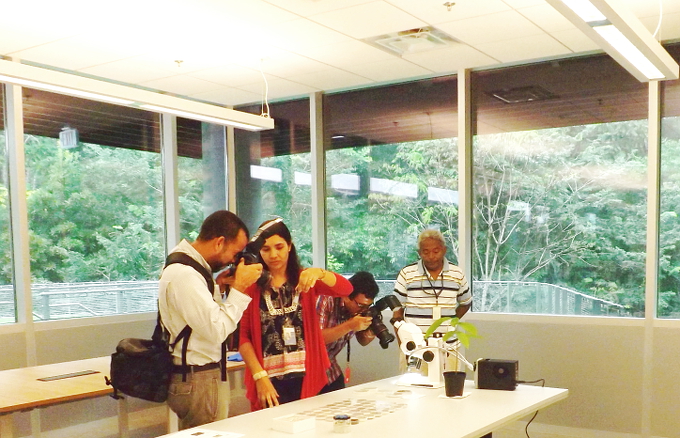
Several species of context
A Smithsonian building spree against a backdrop of rising irrationalism in the USA: Does this lab’s mission include investigation into to climate change and evolution? Polls indicate that about one-quarter of American adults believe that evolution doesn’t really happen. In a statistical tie in the race for November’s US elections there is a presidential candidate who calls global warming a Chinese hoax aimed at destroying the American economy. All sorts of long discredited racial theories and negative stereotypes about other people’s cultures and religions are in vogue. The politics of the endlessly repeated lie — a technique invented by the US advertising industry, then perfected in it most pernicious political application by the Nazis — thrives not only in Internet memes but also in candidates’ stump speeches. All of this creates doubts about the future and funding of the Smithsonian Institution, a US government agency and famous polymath academic organization.
Attempts at political and corporate manipulation are an old story for the Smithsonian. Perhaps these have been more successful with respect to history and the arts. STRI draws its staff, research fellows and visiting scientists from about 55 countries and among them there are certain common attitudes that resist manipulation. Were some anti-scientific mandate to come from on high to the world class scientists who work at STRI, it’s probable that there would be a mass exodus to other institutions and other countries where scientific methods get more respect.
The national institution went through great turmoil in 2006 and 2007, mainly over scandals that arose from the importation of corporate values and habits at the end of the 20th century. But one of the signal events in the Smithsonian’s troubles was a 2006 National Museum of Natural History exhibit on the Arctic. At a time when oil companies were offering large donations and members of Congress were denouncing the scientific consensus about the nature and causes of climate change a fraud, on orders from above the exhibit was changed to replace references to global warming as an established fact with suggestions that this was just one possible theory. There was a rebellion among government scientists, within the Smithsonian and in other public agencies. That fed broader inquiries which ultimately brought down the Smithsonian’s top people of that time.
So why wasn’t the Smithsonian’s top officer, Secretary David J. Skorton, on hand for the laboratory’s opening? At the time Skorton was busy with the preparations for the opening of the National Museum of African American History and Culture three days later. The lab and the museum are but two of more than a dozen new Smithsonian facilities opening in the last year of the Obama administration. Fairly or unfairly, we might look at the state of US society and infer reasons about why ribbon-cutting season for this building spurt is happening now.
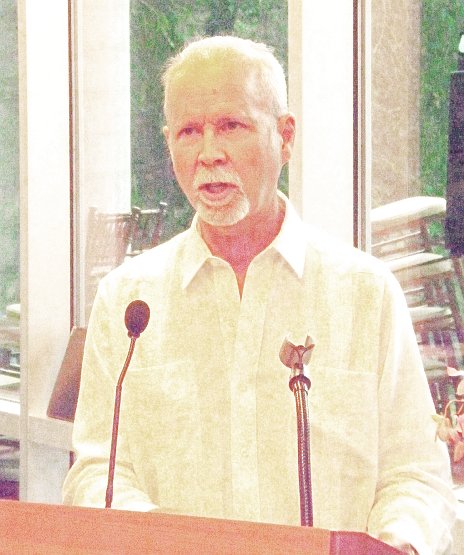
A new facility as a symbol of a new era at STRI: One day in the fall of 2013, this reporter was told by several secondary sources at STRI, a management detail sent from Washington barged into the office of then STRI director Eldredge “Biff” Bermingham, seized his computer, obliged him to hand over his Smithsonian ID and set of keys to STRI facilities and permanently banished him from the institute. Since that firing STRI has pretty much made Bermingham a non-person. Any mention that Bermingham ever existed has been erased from the STRI website. He is the only former director who was never given emeritus status.
Why did this happen? The people who know do not get into the details other than to say that there was a conflict of interest. A couple of coincidences may suggest a reason of sorts, but may just be coincidences. Shortly before his ouster Bermingham proudly announced to this reporter that he was the owner of a penthouse in the San Carlos beach development of Vista Mar, a Shahani brothers project that was at the time in search of controversial environmental permits for the diversion of the Rio Teta to water their golf course and the construction of a marina that destroyed a lobster niche off of Playa Ensenada. Bermingham’s ouster also came at a time when the US government began to make public statements suggesting that it did not approve of Ricardo Martinelli’s moves to neuter the Electoral Tribunal and otherwise clear the way for a stolen 2014 election which would leave him in control of the country through proxies.
Whatever it was, the apparent consensus within STRI was that the institute needed to be rid of Bermingham but that whatever the offense was it did not warrant his being drummed out of the scientific community and left unable to work and support his family. He is now the chief science officer at the Patricia and Phillip Frost Museum of Science in Miami.
The washing of STRI’s dirty laundry is not this reporter’s purpose, but it’s important to note that while conditions in the society and government of the United States are hazardous to the mission of the Smithsonian Institution as a whole, Panamanian society and government also set ethical traps, not necessarily the same ones, for STRI. Here corporate and banking secrecy set the stage for opaque deals in both the private and public sectors and generally hinder accountability for any wrongdoing. Here we have one of the world’s very worst educational systems. People at the top of society — including at the flagship national university — flaunt falsified academic credentials. Getting to the top is generally a matter of family ties rather than ability. It’s rare for anyone to get kicked out of a profession for misconduct. By and large there is no conflict of interest law here. In court cases the concealment or destruction of relevant documents gives rise to no presumption that the party who concealed or destroyed them did so because that evidence would be adverse to his or her interests. Here there is no real penalty for filing a fraudulent environmental impact statement.
The governments that such social conditions create treat expert opinions as commodities to be purchased and experts whose word can’t be bought as defective. It’s always a potential problem for STRI, a US government institution operating by leave of Panamanian authorities.
Panama’s “atomic bomb” might be to kick the Smithsonian out of the country altogether, but STRI depends on all sorts of cooperation on many levels and lesser things could be denied or delayed. Visas for foreign scientists — not just American ones — or permits to collect fauna or flora in protected areas could be denied. Panama could prevent STRI archaeological digs, or deny scientists protection from huaqueros who would vandalize and loot their work. The institute, or more likely those who work for it, could be shaken down in myriad ways.
Panamanian politics have surely affected STRI’s work, but it’s more complicated than just intimidation. In 2006 the Panama Canal Authority and Martín Torrijos administration claimed a STRI endorsement for the “Yes” side in the canal expansion referendum, something that would be terribly inappropriate for a US government agency to issue. STRI in fact made no such endorsement but neither did the institute dispute the claim. But there are Panamanians who work at STRI, who do take sides in Panama’s national debates and some did in that referendum.
That choice, in which most of the Panamanian electorate abstained, presented a complex set of technical, scientific, economic and political issues. Part of the “Yes” campaign’s pitch was based in climate change denial. They denied that Arctic ice would melt so as to create navigable routes that would compete with the Panama Canal. Biff Bermingham claimed to this reporter that concerns about the new locks’ water saving basins increasing the salinity of Gatun Lake and endangering much of Panama’s drinking water supply were misplaced because a hydrologist’s recent research had shown that the constant inflows of fresh water from the watershed would flush the salt out of the lake. But he would provide no citation to anything published on this matter, and the recent El Niño drought perhaps calls into question predictions of this sort. The ACP was yet worse. Their own studies said that the salinity issue needed more research, but the ACP claimed that the study had been superseded by newer work, yet then and to this day they have refused to specify which new research, by whom.
A basis for mistrust of the ACP’s scientific claims was laid early in the campaign by their misrepresentation in Spanish of an American archaeologist’s study that was published in English. When that scientist objected, he was told that strings would be pulled so that he would never again work in Panama. That sort of thing would be the stuff of public protests by scientists if done in the United States, but STRI folks kept their silence about it. Perhaps Bermingham’s claim that Panama was offering STRI a hydrology institute enhanced the effect.
This reporter, who is not a scientist but draws on experiences in the USA as a local elected official, a building code appeals board member and a lawyer who dealt with road construction contractors and the games that they play, was born in Panama and does not make the pretense of not having opinions on things. STRI anthropologist and Galeta Point lab director Stanley Heckadon is also a Panamanian citizen, has advised or served governments — he played a key role in General Omar Torrijos’s decision to create a series of national parks in the canal watershed rather than turning those areas over to developers who wanted them — and in the course of the campaign this reporter and Heckadon had a back-and-forth exchange about potential salt intrusion into Gatun Lake. Heckadon cited no undisclosed studies and made no projections about what the watershed’s future rainfall would be. Having previously studied and documented the increasing pollution of the canal’s lakes, his argument was that the metro area should not be taking its water supply from the lake anyway. As it turned out, at a cost of more than $1 billion and with many problems along the way, the main water intake was moved upstream to Madden Lake. We might now argue about whether and to what extent the cost of the canal expansion was improperly compartmentalized and thus deceptively understated to the voters, but that’s off the side of a side issue. In a season of specious claims Heckadon made an honest argument.
As it turned out the canal expansion digging led to important scientific discoveries. STRI paleontologists led by one of the stars of the profession, Colombian scientist Carlos Jaramillo, made important fossil discoveries that went a long way toward resolving an old argument of just when the Isthmus of Panama closed the gap between the oceans.
There is still some finishing work to be done on the canal expansion and perhaps there will be more important fossil finds. The technical and economic issues are unfolding and political consequences may follow. But a chapter in Panama’s history, and also in STRI’s, is coming to a close. The new lab, and the new STRI administration, coincide with the changed situations and are likely to become symbols of them.
How different is Panamanian political culture and what changes would there be in its relationship to STRI? That’s hard to say. Panama’s official delegation at the lab’s opening was led by Environment Minister Mirei Endara, who seemed quite pleased. “This facility will strengthen the capacities of our community of scientists,” she said. But perhaps more important than the minister to STRI folks working in Gamboa was the presence of quite a few members of the Environmental Police unit. This is the scientists’ line of defense against being mugged in the wood or having their rainforest experiments vandalized.


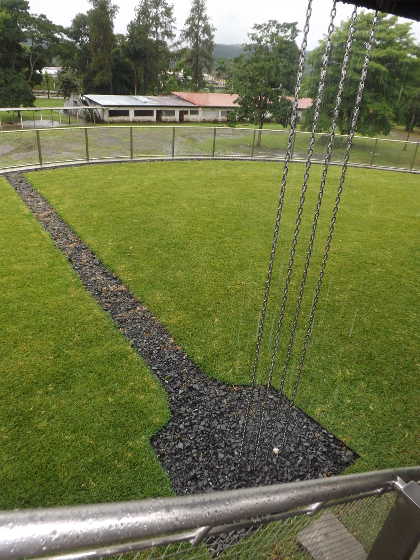
Is this lab, along with other new Smithsonian projects, a break from a corporate model that prevails across much of US public higher education and a lot of the nonprofit sector? It has been heard so many times before. To grow and thrive, this public or private nonprofit outfit needs to be “monetized.” The money-making functions need to be grown and spun off beyond the constraints of public policy or a charitable tax status. Millionaire, billionaire and large corporate donors must be attracted. To do this sharp operators from the world of business — especially from the financial sectors — are the ideal leaders. To work well with such donors, these executives must receive salaries and benefit packages that allow them to fit seamlessly into the same social circles. From small public universities to great national institutions, this sort of thinking has prevailed in American society for more than a generation. The Rector Magnifico was just a crummy Panamanian imitation.
And so it was that in 1999 the Smithsonian Institution, guided by regents and staff who thought that way, spun off money making functions as the privatized Smithsonian Business Ventures. Then they set up an appointment process that brought banker Lawrence M. Small, previously of Fannie Mae, Citibank, as the institution’s 11th secretary, which is the title of the Smithsonian’s top executive.
Rather immediately Small ran into resistance from scientists when he moved to close unprofitable research activities, such as what is now the Smithsonian Conservation Biology Institute in Virginia. Then he was convicted of violating international and federal law by possessing without a permit an Amazonian artifact containing the feathers of an endangered bird. He got in trouble with scientists again over censorship of frank discussion of global warming. In the end, in 2006 and 2007, Small was run out of office over tawdry financial abuses, including fraudulent housing allowance claims, his wife’s unofficial trip to Cambodia on the Smithsonian dime, sweetheart television deals with the Showtime Networks, $90 grand in overstated expenses, and… we probably don’t know the extent of it. Against the orders of the Smithsonian’s top lawyer, records were destroyed.
Small’s ability to get into so much trouble — which culminated when the US Senate froze about $17 million in appropriations and prompted his resignation in March of 2007 — was aided by broad exemptions from the application of the Freedom of Information Act (FOIA) to the Smithsonian. It’s not a simple issue. It’s easy to say that the public has a right to know how much the head of a government agency is paid, or the financial details of part of a public institution that has been spun off into a private company still controlled by that public institution. But should a Smithsonian archaeologist be obliged to tell the location and details of her ongoing dig to the huaqueros? Should a Smithsonian biologist who is not ready to publish have to turn over his preliminary research results to a rival for some prestigious professorship? Add the proprietary claims of corporations whose grants fund much of today’s scientific research and the transparency versus secrecy issues become yet more complicated.
Small, however, was in an ethical league with his fellow financial manipulators who largely brought down the US economy a year and a half later. There was a clique at the Smithsonian that went along with his secretive, sticky fingered ways. But mostly the Smithsonian culture spat that stuff out. Regents rebelled and complained to Congress. Notwithstanding FOIA exemptions, key people at the Smithsonian insisted on the retention of records. When Small fell a bunch of people went with him.
If one cares to look at the Lawrence M. Small story as a part of the larger ethical tale of the 2008 financial and real estate collapse, then the Smithsonian stands out as something of a contrast. There was more accountability at the Smithsonian.
With the exodus accompanying Small’s departure, long-time STRI director Ira Rubinoff, who had been training Biff Bermingham to take his place, left for Washington to take over as interim science director. When Small’s successor, G. Wayne Clough, stabilized things and put together a new team Rubinoff came back to Panama, now as STRI director and staff scientist. He played a role in getting the land and making the arrangements for the new Gamboa lab.
In 2014 the president of Cornell University, cardiologist and jazz musician David J. Skorton, became the Smithsonian’s 13th secretary. He, the institution and its outpost in Panama face a new generation of challenges. But some of these folks will do so in a really cool building in Gamboa.
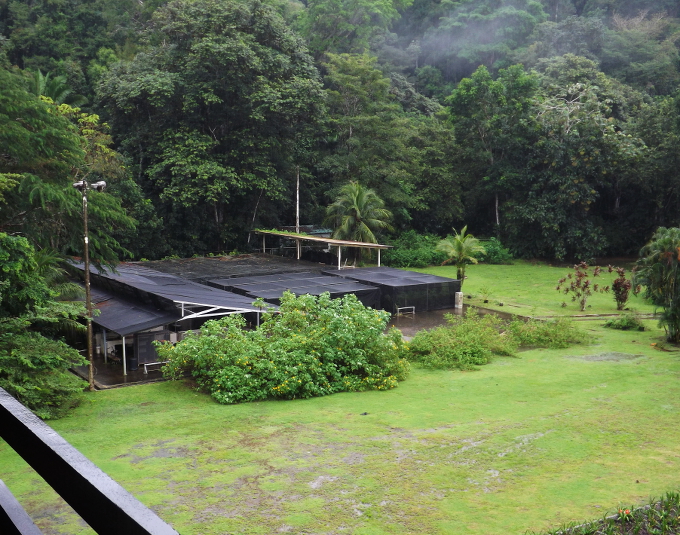
~ ~ ~
These announcements are interactive. Click on them for more information.










